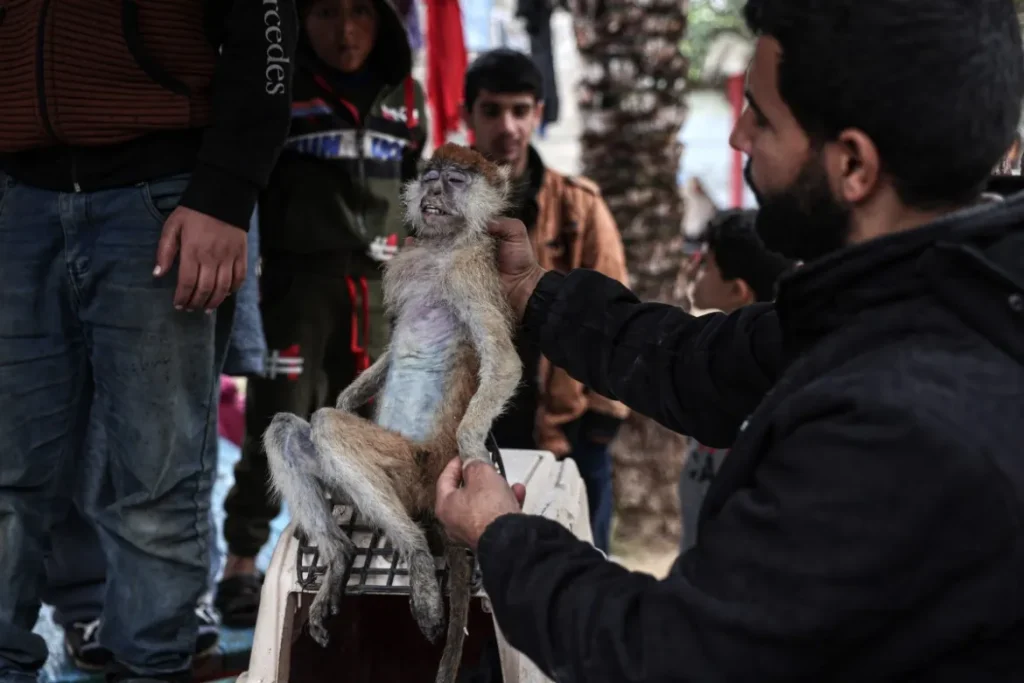At a zoo in Rafah, in the southern Gaza Strip, dozens of destitute Palestinians are sheltering between cages that hold starving monkeys, parrots and lions, with no end in sight to Israel’s offensive on the enclave.
Most of Gaza’s 2.3 million people have been driven from their homes because of the Israeli military’s relentless attacks by air, land and sea, as well as forced evacuations, and much of the territory has been reduced to rubble. Many fled to already overcrowded Rafah, seeking security in packed camps and pitching tents on street corners.
In the private zoo run by the Gomaa family, a row of plastic tents has been set up near the cages and washing is hung from lines between palm trees. Nearby, a worker tried to feed a weak monkey tomato slices by hand.
Many people at the zoo are members of the extended Gomaa family who were living in different parts of the enclave before the conflict destroyed their homes.
“There are many families who have been completely wiped out. Now all our family is staying in this zoo,” said Adel Gomaa, who fled Gaza City. “Living among the animals is more merciful than what we get from the warplanes in the sky.”
A United Nations-backed report last week warned that Gaza was at risk of famine, with the entire population facing crisis levels of hunger.Israel stopped all food, medicine, power, and fuel imports into Gaza when the current conflict started in October. While it now allows some aid to enter the Strip, security checks, delivery bottlenecks, and the difficulty of moving through the rubble of a warzone have hindered supplies. Many Palestinians say they do not eat every day.










